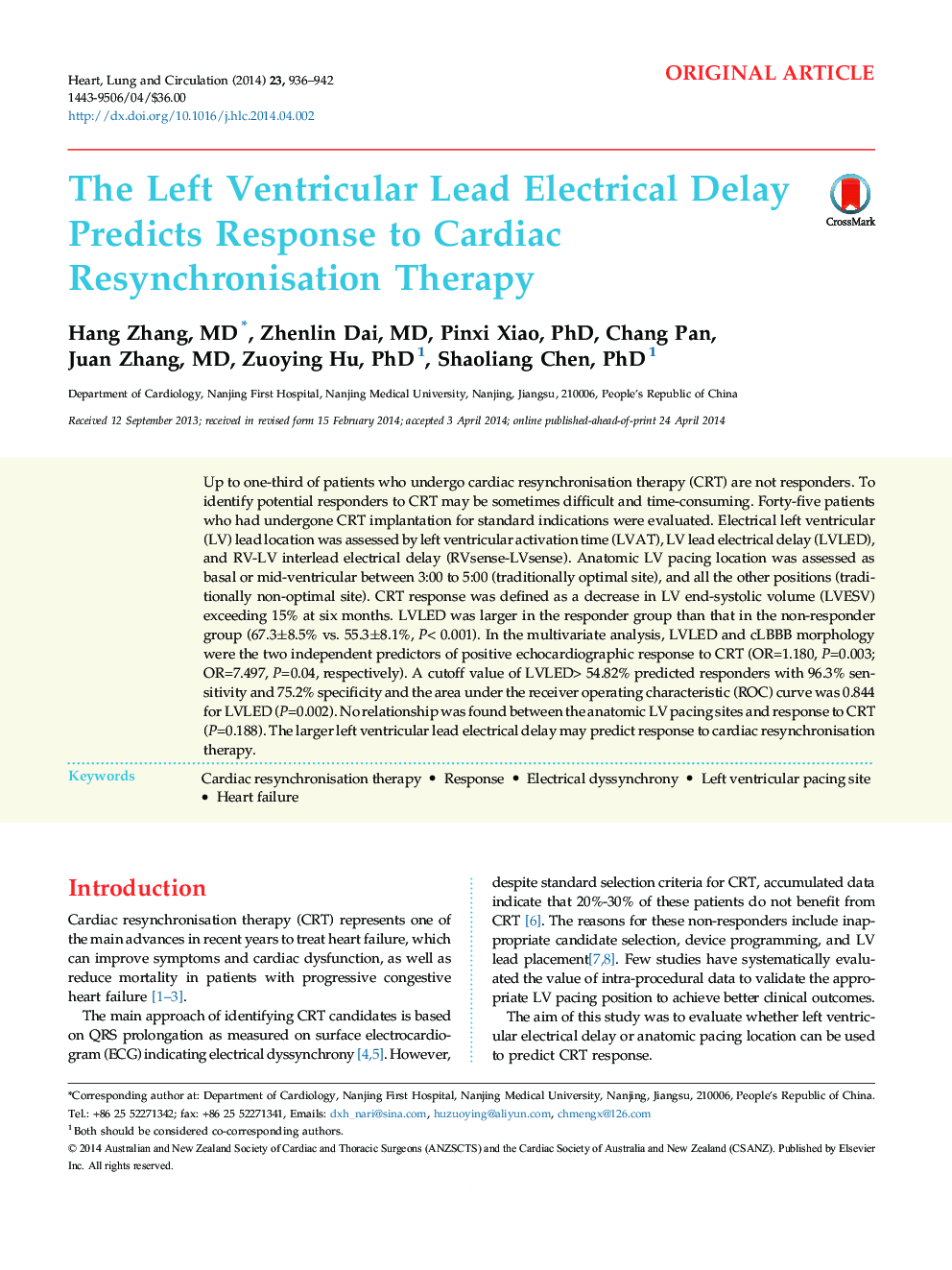| Article ID | Journal | Published Year | Pages | File Type |
|---|---|---|---|---|
| 2917784 | Heart, Lung and Circulation | 2014 | 7 Pages |
Up to one-third of patients who undergo cardiac resynchronisation therapy (CRT) are not responders. To identify potential responders to CRT may be sometimes difficult and time-consuming. Forty-five patients who had undergone CRT implantation for standard indications were evaluated. Electrical left ventricular (LV) lead location was assessed by left ventricular activation time (LVAT), LV lead electrical delay (LVLED), and RV-LV interlead electrical delay (RVsense-LVsense). Anatomic LV pacing location was assessed as basal or mid-ventricular between 3:00 to 5:00 (traditionally optimal site), and all the other positions (traditionally non-optimal site). CRT response was defined as a decrease in LV end-systolic volume (LVESV) exceeding 15% at six months. LVLED was larger in the responder group than that in the non-responder group (67.3±8.5% vs. 55.3±8.1%, P< 0.001). In the multivariate analysis, LVLED and cLBBB morphology were the two independent predictors of positive echocardiographic response to CRT (OR=1.180, P=0.003; OR=7.497, P=0.04, respectively). A cutoff value of LVLED> 54.82% predicted responders with 96.3% sensitivity and 75.2% specificity and the area under the receiver operating characteristic (ROC) curve was 0.844 for LVLED (P=0.002). No relationship was found between the anatomic LV pacing sites and response to CRT (P=0.188). The larger left ventricular lead electrical delay may predict response to cardiac resynchronisation therapy.
